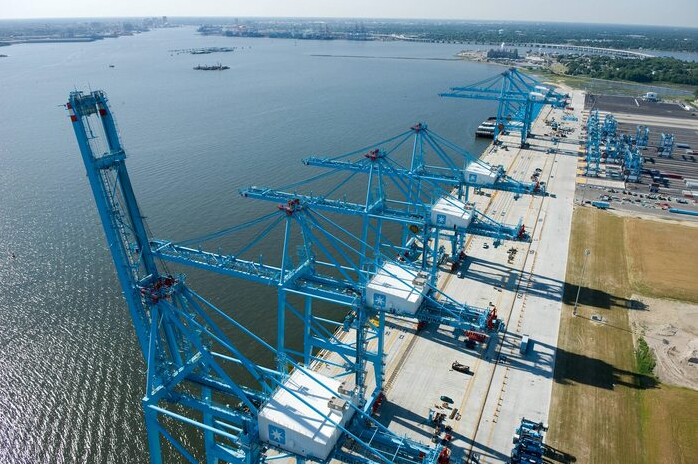

編輯:glafamily 發(fā)表時(shí)間:2016-02-22

The attractive profit margins of the past may not be in the future for container terminal operators as global volume growth rates fall to their lowest level since 2009 while capital and operating expenditures rise.
Double-digit average throughput growth in the years before the global financial crisis has slowed to a new normal of around 5 percent, according to Drewry in its latest Container Insight Weekly. While this was not surprising, the analyst said what was worrying was the sharp slowdown in growth triggered by economic and political changes in China.
“In 2015, global container port growth was only around 1 percent and in 2016 it is not likely to exceed 2.5 percent. These are the lowest growth rates ever seen by the industry, apart from in 2009. The industry has adjusted to a new normal of around 5 percent growth per annum, but what if the new ‘new normal’ is less than half of this?” Drewry asked.
Typical earnings before interest, taxes, depreciation and amortization margins for global container terminal operators have remained in the range of 20 to 45 percent year after year. Although ports are not immune to the volatility of the market and the world economy, Drewry said they have proven their ability to weather storms — even in 2009, a year where global port volumes fell by nearly 9 percent and the worst year the industry had ever seen, all of the main global container terminal operators maintained their EBITDA margins, at least in percentage terms.
However, the analyst said the global container port industry may be entering a new phase of its development, where several key variables are looking increasingly challenging
While the high growth of the pre-2009 years has disappeared, a new challenge has arisen in rapidly-rising ship sizes. This has seen cascading from one trade lane to another so that all ports are seeing a substantial increase in the size of vessels they handle.
“In a low-growth demand environment, the deployment of bigger ships results in lower frequency services and greater volume peaks. For terminal operators, capex and opex costs are increasing while demand is relatively static,” Drewry noted.
Then there is the alliance issue. The formation (and re-formation) of larger carrier alliances means that for ports and terminals, the size and complexity of each customer is increasing, along with their bargaining power.
“This is a double-edged sword though, because as ships and alliances get bigger, the choice of ports and terminals that can accommodate them reduces,” Drewry said. “The creation of alliances has resulted in market share volatility for many ports — and the makeup of the alliances is going to change again soon due to M&A (merger and acquisition) activity in the liner sector.”
The analyst said the new nature of demand was for less fragmented terminal capacity with fewer, bigger terminals needed in each port, which required consolidation of terminals both physically and in terms of ownership. However, such consolidation was complex and expensive, and may not be possible, or may take a long time to achieve.
Drewry believes the global container port and terminal industry is on the cusp of a critical turning point. To safeguard the provision of suitable capacity and productivity for the long term, the analyst said changes would have to take place to ensure sufficient returns on investment for port operators.
“Something has to give,” Drewry said.